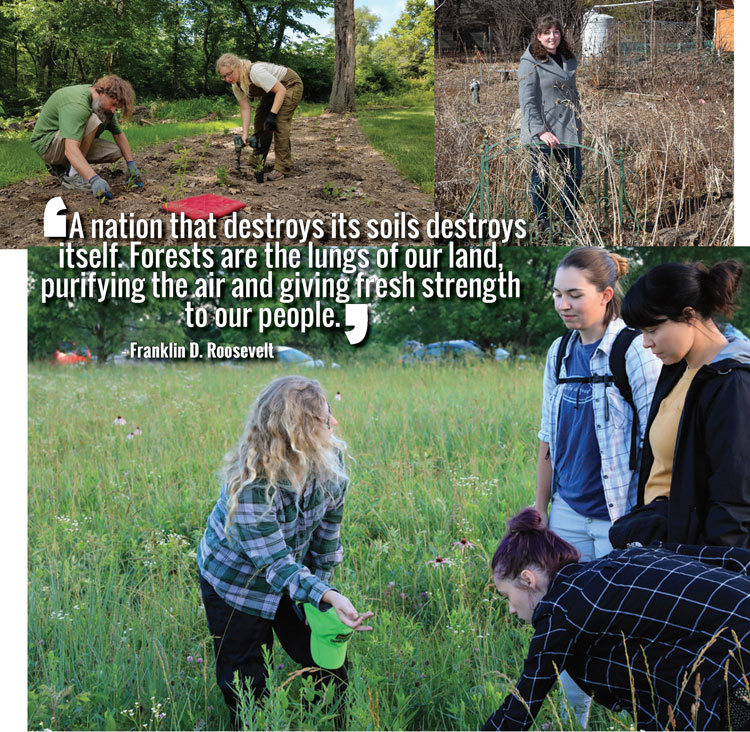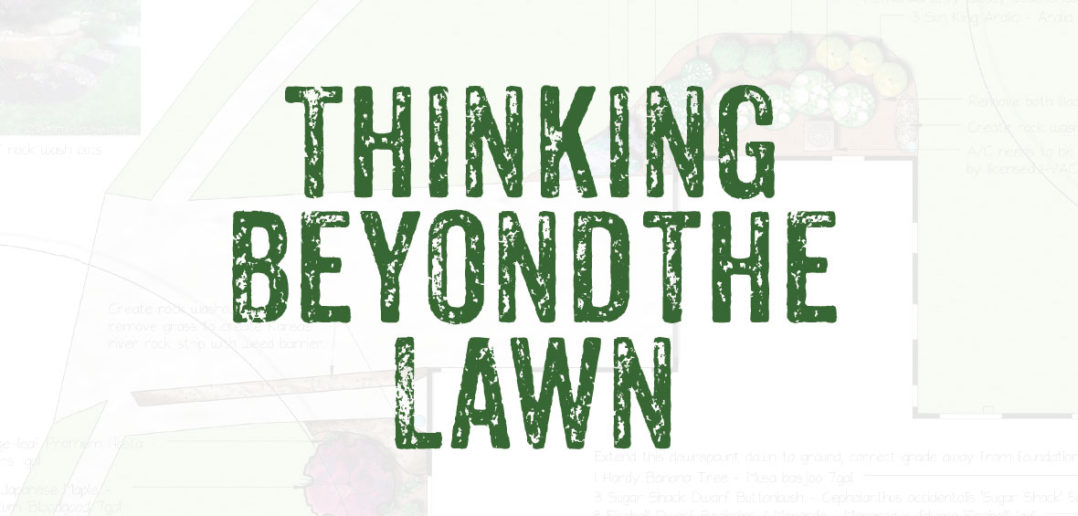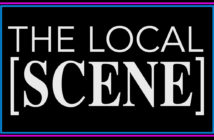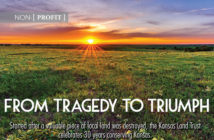Local landscape designers educate community on creating yards that are useful, sustainable and beautiful.
| 2020 Q1 | story by Liz Weslander | photos courtesy Jerry Jost and Low Maintenance Landscape
 While some may consider bright green turfgrass and non-native ornamental accents to be the gold standards of an attractive yard, the truth is that this traditional approach to landscaping has some major drawbacks. Aside from the water, chemicals and labor required to maintain them, turfgrass and non-native ornamentals create an environment that does little to feed native pollinators or protect wildlife. The good news is that it is quite possible to incorporate low-maintenance, beneficial plants into a landscape while still maintaining curb appeal. Even better, these two local experts regularly share their knowledge both professionally and as a service to the community.
While some may consider bright green turfgrass and non-native ornamental accents to be the gold standards of an attractive yard, the truth is that this traditional approach to landscaping has some major drawbacks. Aside from the water, chemicals and labor required to maintain them, turfgrass and non-native ornamentals create an environment that does little to feed native pollinators or protect wildlife. The good news is that it is quite possible to incorporate low-maintenance, beneficial plants into a landscape while still maintaining curb appeal. Even better, these two local experts regularly share their knowledge both professionally and as a service to the community.
Laura Odell is one of three landscape designers at Low Maintenance Landscape, a full-service landscaping outfit that has been serving the Lawrence area since 2001.
Odell says Low Maintenance Landscape has a holistic approach to landscaping that aims to create attractive designs with year-round interest while also reducing lawn, water usage and chemical input. Low Maintenance Landscape uses a mix of natives and exotics in their designs, but as part of a low-maintenance approach, they only recommend plants they have tried and tested in their on-site example gardens.
“Before we can recommend a plant for landscape, we have to know how it will perform here in Lawrence, Kansas,” Odell explains. “Something might do great in St. Louis or even Kansas City, but we have different topography and our own special microclimate here. Anytime we are considering a new plant, we put it in an example garden first, and we let it go through a couple of seasons to see how it really performs.”
Odell’s landscape-design specialty is permaculture, a set of sustainable land-use design principles that emphasizes “working with, not against, nature” to create self-sustaining and self-regulating gardens. Odell’s specialty means that she often works with customers who are interested in using plants that are beneficial to wildlife and pollinators, and who are looking to incorporate edible, medicinal and native plants into their landscaping. She also designs rain gardens that address drainage concerns by using rainwater in a way that is beneficial for wildlife and pollinators.
“If a plant is providing a benefit—whether it is medicinal, food producing for humans and wildlife, or good for pollinators—I would say it has a place in the garden. The more diverse you can make it, the stronger it is,” Odell says. “If we have a choice of planting something, why not plant something that will give you a yield, something that will give back for all your hard work and effort? I love all kinds of plants, but the ones that feed me are probably my favorites.”
And to be clear, using beneficial, edible and low-maintenance plants does not mean sacrificing beauty. For instance, Odell says a beautiful perennial flower border could easily incorporate native and pollinator-friendly plants, as well as attractive edibles such as rainbow chard, that can be harvested repeatedly during the growing season.
Odell’s love of permaculture and edible landscaping extends beyond her work with clients at Low Maintenance Landscape. She also volunteers her time as the coordinator for PermaCommons, a permaculture demonstration and teaching garden at 1304 Pennsylvania St. The collectively maintained garden uses no herbicides and no chemical fertilizers. The plants at PermaCommons are chosen for their low-maintenance and multifunctional aspects, and placed in locations that make the most of varying microclimates on the site. For instance, a sump pump from the neighboring property drains into the gardens onto the north side, so moisture-tolerant plants like wild ginger and pawpaw trees grow there. A sloped section of the garden that is hot and dry is home to sun-loving echinacea and lavender.
“It’s amazing,” Odell exclaims. “We have a very diverse selection of fruit trees, shrubs, ground cover and climbers. If there are volunteer plants like plantain, nettles or dandelion that pop up that are medicinal, we will study those and possibly make them into tinctures.”
Odell says sharing information about permaculture with people in the community through PermaCommons is rewarding for her, and helping people become more confident in growing more food on their land is very important to her. However, she does recommend consulting a professional designer in at least the beginning stages of creating a sustainable space.
“People interested in permaculture tend to also be do-it-yourself types, and I love to support that,” Odell says. “But it’s also heartbreaking to see beginners with good intention struggle or waste money on plants that don’t work out. I don’t want people to get frustrated and give up all together. A consultation with a professional is money well spent.”

Laura Odell, landscape designer at Low Maintenance Landscape shows off a future Community Garden in East Lawrence; L & below: Native Lands ecologist Courtney Masterson works the field and teaches students the intricacies of native plants
Getting Back to Native
Courtney Masterson is another local landscape professional with a passion for sustainability that reaches far beyond her paying work. Masterson is an ecologist and owner of Native Lands LLC, a landscape-management business that focuses exclusively on plants that are native to northeastern Kansas. Native Lands works with a large spectrum of clients that varies from people looking to use native plants in container gardens and backyards, to clients with multiacre prairies and forests.
Masterson’s dedication to native plants took hold after an educational journey that started in art and eventually led her to a master’s degree in ecology and evolutionary biology from the University of Kansas.
“I just fell in love with the intricacy of every native plant—the ways the plants related to each other, and the ways the animals related to the plants,” Masterson says.
During the course of her studies, Masterson explains it quickly became obvious to her that not only were native plants beautiful and important, but that she wasn’t seeing them in her day-to-day life.
“The prairie, native forests and the wetlands were places that I went to, they weren’t spaces I was immersed in at home. So I started trying to build those places for myself and for the people around me,” she says.
As she evolved into an expert on native plants in this region, Masterson was constantly fielding questions from people on the subject, which is why she recently decided to make Native Plants LCC a full-time endeavor.
“The new challenge is balancing what am I going to do as the business versus what I am going to do as Courtney,” Masterson says. “The business is only a year and half old. And I’m still struggling with that balance.”
While there is plenty of local interest in and demand for native plants locally, Masterson says there are people out there who are sometimes slow to embrace them as a viable option for landscaping. However, she can usually convert the skeptics.
“There are a ton of reasons to incorporate native plants into a landscape, including providing wildlife habitat, drought and flood tolerance, and natural pest resistance,” Masterson explains. “Even deeper, we can consider native gardens a reservoir of genetic material, protection of the genes found in natural ecosystems.”
A native plant garden can be a good option for people who have struggled to create attractive garden spaces because of lack of time or because they think they have a “black thumb,” she continues.
“This is the solution for people who have not been able to achieve Master Gardener-level beautiful gardens. Native plants rival the beauty of anything we grow from other countries or that we have created in greenhouses,” Masterson says. “And you don’t have to primp or prune, and fertilize them for them to be beautiful. They do that on their own. Native plants are happy in their space because they belong here. They flourish.”
Like any landscaping approach, success hinges on choosing the right plant for the right place, Masterson explains, which is why she recommends conferring with someone who knows the broader suite of plants native to this region before purchasing plants and putting them in the ground, especially given the longevity of native plant gardens.
“Our native plants tend to live a really long time, so once those plants go in the ground, it would be nice if they were in a place where they could stay for 20 years, and nobody would be upset about it,” Masterson says.
As Masterson’s work with paying private clients grows, her dedication to community education and to making native plant gardening accessible to everyone remains steadfast. Through the Kaw Valley Native Plant Coalition, Masterson regularly gives free talks about native plant gardening and has installed, and voluntarily maintains, native plant demonstration gardens in various locations throughout Lawrence, including at the Burroughs Creek Trail, Oak Hill Cemetery and the parking lot at 824 New Hampshire St., which hosts the Lawrence Farmers’ Market.
“When you spend time in those spaces, they are like oases,” Masterson says. “They are the only native plant spaces in town that are not on private property, and to see the animals interact with them is really special.”
Masterson explains the native plant demonstration gardens produce a lot of seeds, and with the help of volunteers, the Kaw Valley Native Plant Coalition collects and cleans the seeds so they can be donated to the Lawrence Public Library Seed Catalog.
“Every step of the way, whether we are having volunteers come out and work in the gardens with us to get to know the plants, learning when and how to collect the seeds or learning how to grow them, we are providing a free opportunity for people to learn another facet of native gardening,” Masterson says.
Her ultimate dream, she explains, is to have native gardens dotting at least every half-mile of the region. This would allow native bees, which are restricted by short travel capabilities, to hop from garden to garden as they travel through urban areas.
“I think native gardens in backyards are the future of conservation of prairie species,” Masterson says. “We are never going to be able to get back to where we were with millions of acres of native prairie, but we can have islands of prairie in every backyard.”




